Reviewed by Geoff Wittig
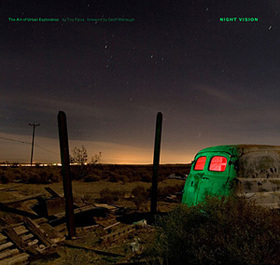 Night Vision by Troy Paiva
Night Vision by Troy Paiva
Chronicle Books, 2008
Paperback, 9.6 x 8.8"
$24.95 ($16.47 at Amazon)
-
Night photography is a tiny corner of the larger photography world, with its own quirks and foibles. Some of the better known fine art photographers such as George Tice, Chip Forelli, Michael Kenna and Helen Garber have featured night exposures in their work. If "conventional" photography has been feeling a bit stale for you, check it out. It provides a huge range of possibilities, from grainy high-ISO urban reportage to dream-like long exposures of moonlit shores. Metering and exposure is generally problematic, requiring lots of trial and error. Back in the prehistoric days of film this meant shooting a roll of film and getting it back from the lab days or even (for Kodachrome, in my case) weeks later, seeing what went wrong, and trying again. The long lead time made iterative learning a real chore, but the final results when everything goes right can be spectacular. Digital capture shortens the whole learning cycle dramatically; things are much easier now. There's a fascinating website devoted to night photography called The Nocturnes; it's well worth exploring if you have any interest.
Within the night photography world there is a smaller subculture devoted to exploration of abandoned buildings and relics, associated with the "UrbEx" phenomenon of urban exploration. Sort of like punk skateboarders, only with cameras. Troy Paiva's new book Night Vision mines this vein of imaging, and follows a path he began exploring with his previous book, Lost America: the Abandoned Roadside West (2003). His night photography technique seems to suit the subject better than "straight" imaging. The subjects are shot at night, generally minutes-long exposures under a full moon, with lots of colored-gel flash or light-painting, a la Chip Simons.
Night Visions has five subsections, each devoted to a different subject, ranging from an abandoned hotel to desert ghost towns to abandoned cold-war military bases to an aircraft boneyard. The brief foreword by Geoff Manaugh invokes authors from W.G. Sebald to J.G. Ballard in an attempt to link Paiva's work to a larger artistic tradition. Paiva's own introduction is a lot more down-to-earth, describing in some detail his technique and the unusual appeal of exploring industrial relics at night. The images themselves vary from moody moonlight desolation to crumbling buildings to derelict aircraft wreckage garishly lit in green and red. The overall impression is that of tacky post-apocalyptic grandeur, sort of Ozymandias of the strip-mall.
Physically the book is compact with a nice quality flexible cover. Color quality would be difficult to judge given the odd nature of the images themselves, but they certainly look striking enough. They are set in black pages which emphasize their nocturnal character. My only complaint is that the text, set in an inoffensive sans-serif font, is printed in Prussian blue against the black page at a fairly small point size. This makes it a real challenge for my middle-aged eyes.
Paiva's work follows a consistent æsthetic theme in exploring his unusual subject. If you like the look, you'll love the book.
For further reading
For those who find night photography interesting, there are a number of resources to tap, beginning with the Nocturnes website above. Andrew Sanderson's Night Photography (Amphoto, 2002) is a B&W-film-based book with lots of information on 'straight' night photography including exposure and development starting points. A good contemporary source is Jill Waterman's Night and Low-Light Photography
(Amphoto 2008), which includes examples of many photographers' work (including Troy Paiva's) and plenty of information on both film and digital technique.
_______________________
Geoff
Featured Comment by Jill Waterman: "Thanks, Geoff, for the mention of my new book, Night and Low Light Photography, at the end of Troy's book review. For anyone interested to get a sneak peek at what my book has to offer I recently launched a companion website. In addition to profiles of the 30 contributors and other content areas, the site features a regularly updated guest artist portfolio, the first of which presents a selection of images from Troy's new title. Please pay the site a visit and check back for updates!"
Featured Comment by Jason: "I'll recommend a fantastic book: Nocturnes by Chris Faust."
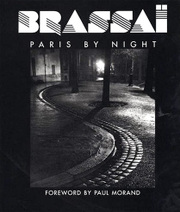 Mike adds: As people are suggesting other night photography books in the comments, I can't resist a mention of the granddaddy of this genre, Paris By Night
Mike adds: As people are suggesting other night photography books in the comments, I can't resist a mention of the granddaddy of this genre, Paris By Night by the great Transylvanian, Brassaï. I have the Pantheon edition, which has gorgeous large spot-varnished repros on matte paper, and I've never seen the current Bulfinch reprint, so I can't speak to the repro quality in that. But the book is one I frequently return to for pleasure, a stone classic. The original was published by Arts et Metiers Graphiques in Paris in December of 1932. The spiral-bound first edition, with the so-called "pebble" (cobblestone) cover (below left), which comes up for auction rarely, usually sells in the range of $30,000–$50,000.
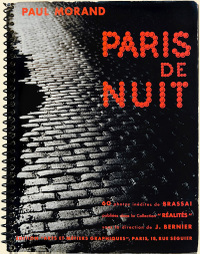 While photographing Paris de nuit, Brassaï was rounded up several times in late-night police raids, because the gendarmes refused to believe that it was possible to photograph in the middle of the night!
While photographing Paris de nuit, Brassaï was rounded up several times in late-night police raids, because the gendarmes refused to believe that it was possible to photograph in the middle of the night!
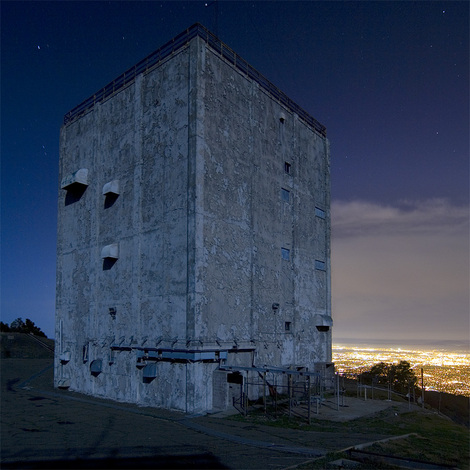
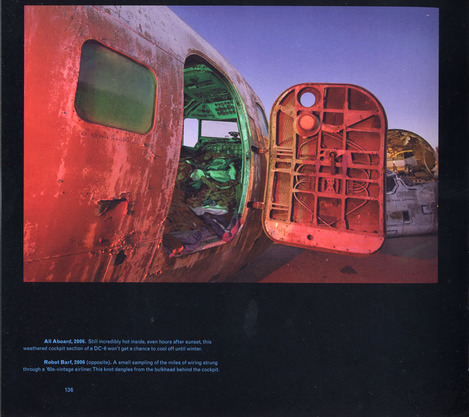



Thank you for another fine book review, Geoff. Indeed, I have seen Troy's imaginative night images. They're really terrific and I imagine that this book presents an excellent greatest-hits collection of them.
"Night photography is a tiny corner of the larger photography world, with its own quirks and foibles. If "conventional" photography has been feeling a bit stale for you, check it out. It provides a huge range of possibilities, from grainy high-ISO urban reportage to dream-like long exposures of moonlit shores."
It sure does! I have long been fond of saying that any goof can take a picture during the day. But good night photography...ahh...now THAT'S a challenge. But, as you've suggested, today's digital cameras make that task much easier than it was in emulsion days. I hope Troy's book inspires more people to crawl out of their cozy hovels to explore the night with their camera. I'm sure getting tired of looking at same ol' same ol' daytime snaps.
Posted by: Ken Tanaka | Monday, 08 September 2008 at 01:34 PM
Like most genres and styles, when it's good it's great. I teeter between loving and hating this stuff but Chip Forelli is a really amazing photographer. I tend to prefer his stuff over Michael Kenna because it seems more industrial and geometric. Where as Kenna seems more of a poet Forelli is a sculptor.
The color stuff from the Nocturnes is beautiful in it's own right but falls short for me most of the time.
Posted by: charlie d | Monday, 08 September 2008 at 01:49 PM
Just added it to my Amazon wishlist. This was an odd surprise because I named the subsection of night photography in one of my web albums "Night Vision," too. I love doing it, but it can be rather daunting because wandering around New York City at night isn't 100% safe, to say the least, and the subways run much slower after dark which slows things down, and it can be very tricky dealing with strong point light sources in the frame. The book looks like fun, though. Thanks for the recommendation.
Posted by: Eric Ford | Monday, 08 September 2008 at 03:18 PM
Quite a few of the Brassai night portraits were taken in brothels... I am sure when he told police he was just there to take photos there was probably a chuckle or two.
My favorite Brassai quote:
"Chance is always there. We all use it. The difference is a poor photographer meets chance one out of a hundred times and a good photographer meets chance all the time"
Posted by: yunfat | Monday, 08 September 2008 at 05:04 PM
Troy's book is fantastic. For more night photography book I recommend the favorite books list on the aforementioned Nocturnes site:
http://www.thenocturnes.com/resources/favoritebooks.html
Troy and I are teaching a night photography / light painting workshop next month at an incredible junkyard out in the Mojave Desert. The workshop sold out quite fast, but feel free to contact us if you want to get on the list for future adventures:
http://www.lostamerica.com/workshop.html
Cheers,
Joe
Posted by: Joe Reifer | Tuesday, 09 September 2008 at 06:56 PM